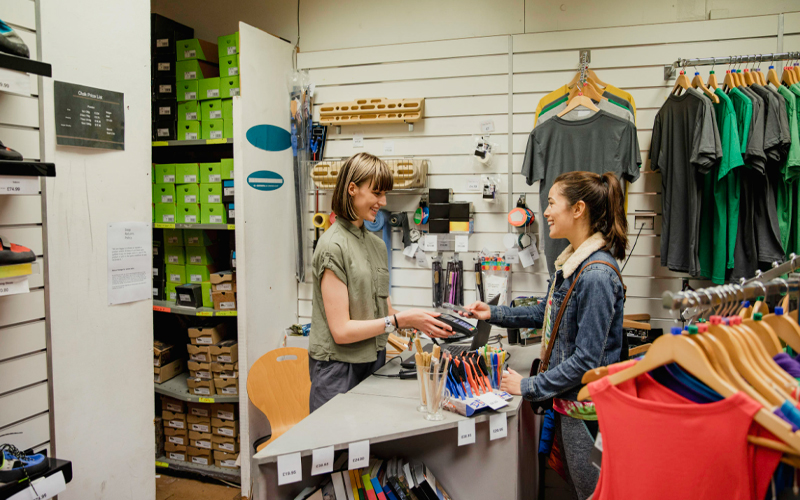Trade promotions are a crucial component of an organisation’s growth strategy in the Business-to-Business (B2B) marketing space. Consumer Packaged Goods (CPG) businesses typically spend 20% of their total marketing budget on promotional activities, amounting to over $500 billion globally.
For manufacturers, distributors, and wholesalers, effective trade promotions are pivotal in meeting revenue goals, increasing market share, and aiding the expansion into new business categories. They are also key in building successful business partnerships.
Unfortunately, according to Neilson Holdings, a global leader in data and market measurement, 40% of CPG trade promotions expenditure fails to produce the desired outcome.
Post COVID, the economy continues to be disruptive. Global CPG brands struggling with burgeoning inflation and eroded margins are unsure how to best utilise their marketing budgets. Additionally, with the lack of visibility into global supply chains and promotion performance, they are unable to measure the effectiveness of their trade promotions.
Let us look at some common marketing and promotion challenges confronting the global CPG industry and some solutions for countering them in a rapidly changing economy.
Trade Promotion Management (TPM) challenges
Global CPG companies face multiple challenges as they try to balance their promotional spend against sales volumes and likely profits. Below are the most common ones:
- Changing consumer behaviour
- Lack of visibility
-
Siloed departments and data sources
- Difficulties in standardisation
- Difficulty in forecasting Price Elasticity of Demand (PED)
- Market cannibalisation
- Lack of access to quality data
With the growth of e-commerce and online retail, brand loyalty is no longer key in driving sales. For most consumers, price determines buying decisions. While in-store optimisation is crucial in generating footfall, brands struggle to identify how much of in-store marketing expense is too much. Moreover, with consumers spread across multiple physical and digital channels, reaching the right customer at the right time is also a challenge.
International trade businesses suffer from extremely poor visibility into the immediate and long-term impact of their trade promotions. Most organisations have insufficient data on post-promotion sales volumes, leading to uncertainty about trade promotion effectiveness.
Even when there is a significant boost in sales, it is difficult to identify the policies that have yielded the highest ROI.Multiple departments are involved in planning, funding, implementation, and tracking TPM activities, leading to miscommunication, process inefficiencies, and a fragmented approach to TPM.
Global brands face multiple obstacles in standardising promotional activities for different geographies. These include demographic, language, cultural, legal, and political barriers, making it difficult to develop a centralised approach to trade promotion management.
There are too many variables and competitor products in the global market, complicating the process of forecasting PED. This is a significant disadvantage for brands strategising promotional activities around price reductions.
Cannibalisation and cross-elasticities in the global market significantly impact the effectiveness of trade promotions. Large-scale cannibalisation results in established brands losing their market share.
Most CPG manufacturers depend on data brokers for external promotional data, including data on competitor campaigns, events, and market trends. Those who use internal data are forced to extract it from disparate systems with legacy software tools.
This makes it difficult to derive comprehensive insights from the available data and incorporate them into TPM strategies.
Countering challenges: Solutions for trade promotion effectiveness
As we stare at a likely global recession, it is impractical, even for established brands, to increase their promotional spend. The only way out is to optimise trade promotions by investing the available revenue in future-facing processes and technologies. Below are some effective solutions for Trade Promotion Optimisation (TPO):
- Differentiate your brand
- Invest in omnichannel promotions and targeted advertising
- Update systems, technologies, and processes
- Assess the effectiveness of past promotions
- Develop KPIs to quantify the impact of specific promotional activities
- Undertake real-time monitoring to gain visibility into promotion performance and adjust strategies as required
- Collaborate seamlessly across departments to develop a centralised approach to trade promotion management
- Leverage AI/ML to predict outcomes
Focus on brand differentiation rather than mere price reduction and promotional offers. This may include product innovation, better customer support, or evoking an emotional response.
Differentiation makes your brand stand out among a plethora of competitor products and can be an effective solution to dwindling brand loyalty, cannibalisation, and cross-elasticities.
Promotional activities must straddle physical and digital channels, deliver a consistent brand voice, and deliver a seamless omnichannel experience to customers spread across diverse channels.
Moreover, marketers must use internal and syndicated data to build targeted promotions based on audience segmentation. These include social media posts, paid ads, and content optimisation. Targeted marketing is cost-effective and helps to forge deeper connections with audiences.
Shift from legacy systems and siloed processes to AI-driven software solutions that enable you to tap into data from various marketing platforms and consumer touchpoints.
Use a comprehensive mix of historical, transactional, research, and syndicated data to develop holistic market insights. High-quality data, analytics, and AI solutions enable TPM teams to -
Machine learning algorithms can forecast the expected costs and profits associated with various promotional activities through comparison analyses and what-if scenarios. They can also provide recommendations based on current and historical data. With predictive insights, CPG companies can accurately measure trade promotion effectiveness and optimise promotional spending.
For organisations on the digital transformation journey, agility is key in responding to a rapidly changing technology and business landscape. Now more than ever, it is crucial to deliver and exceed organisational expectations with a robust digital mindset backed by innovation. Enabling businesses to sense, learn, respond, and evolve like living organisms will be imperative for business excellence. A comprehensive yet modular suite of services is doing precisely that. Equipping organisations with intuitive decision-making automatically at scale, actionable insights based on real-time solutions, anytime/anywhere experience, and in-depth data visibility across functions leading to hyper-productivity, Live Enterprise is building connected organisations that are innovating collaboratively for the future.
How can Infosys BPM help?
Infosys BPM provides digitally enabled TPM services that are integrated by industry, augmented with analytics, and delivered with agility and speed. We have helped several CPG clients globally to achieve an ideal TPM model.
Know more about Infosys BPM Trade Promotion Management services.







